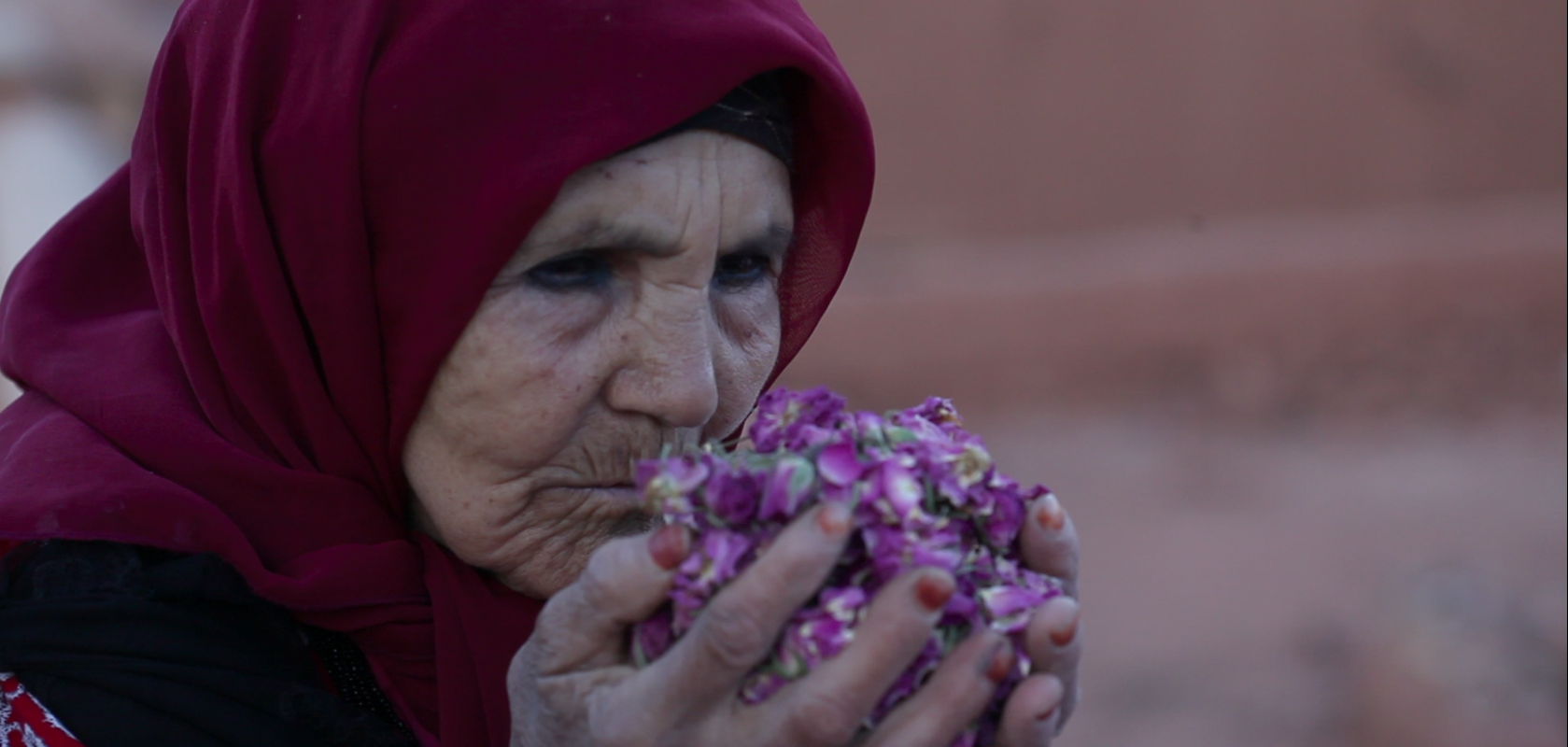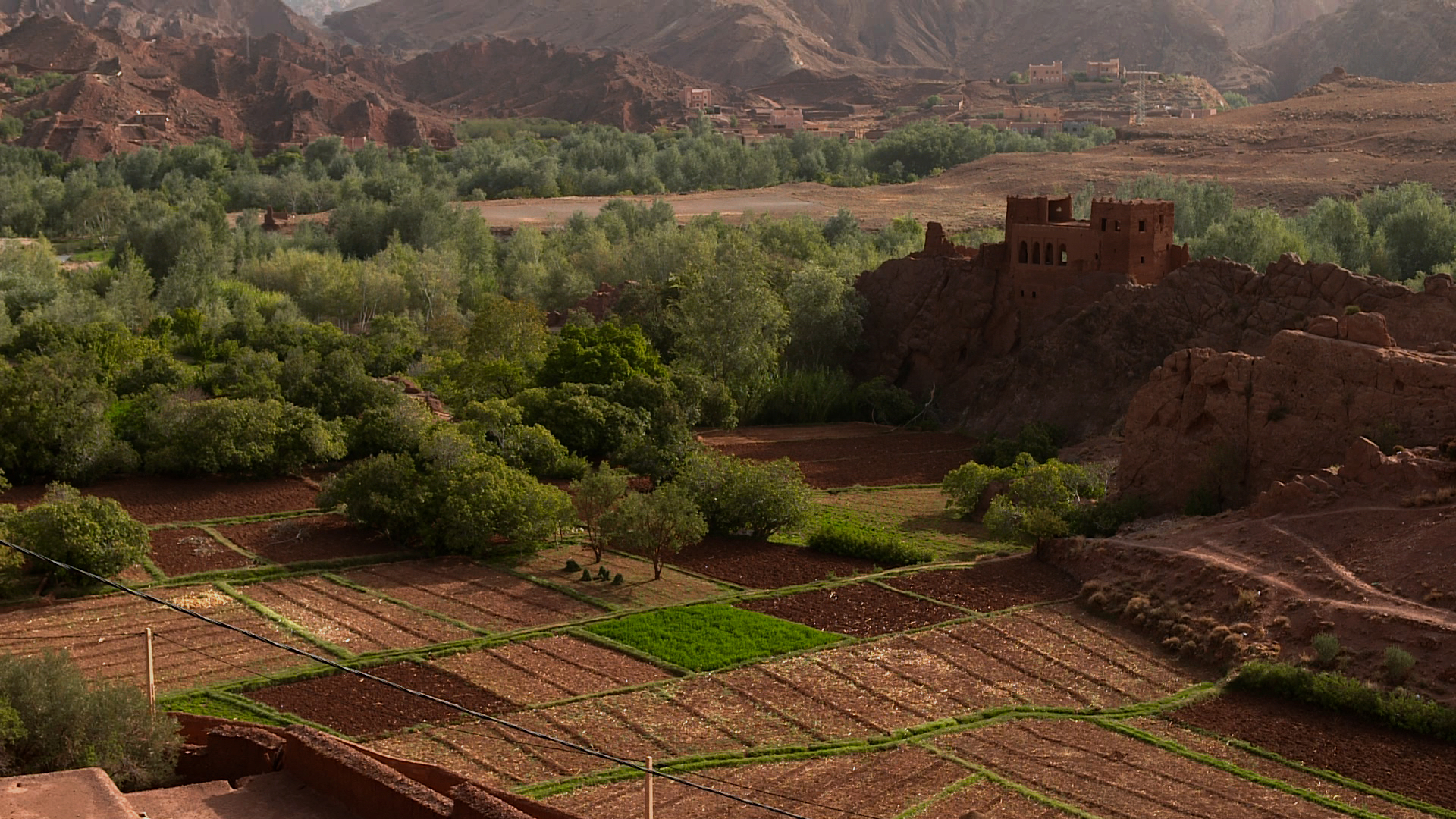Synopsis
A land of a thousand and one nuances, Morocco boasts myriad faces. Its gorgeous color spectrum is dominated by hues of ochre, white, green, red and blue. Colors teeming with meaning, stories and culture… that light up the landscape as well as our imaginations. This 5-part documentary series is a unique visual experience that leads viewers on an extraordinary voyage through Morocco.
White begins in Morocco with the intense sunlight that floods the landscape and illuminates the houses, mosques and alleyways of the whitewashed medinas. The color of the sacred, white is embodied in one of the country’s emblems, the white stork that flies between Africa and Europe and nests in a mysterious necropolis in Rabat.
There’s also the white of prestige and pageantry, the white of the country’s most sought-after fine-wool djellaba worn by dignitaries and made in the Middle Atlas mountains according to an unchanging tradition.
Over time, the white house on the hill has become Casablanca, the largest metropolis in the Maghreb. The white facades of its historic district attract architecture enthusiasts from all over the world.
White, a universal symbol of purity, is the color of an elegant wine, produced on an estate in the Essaouira region by a man who loves the most ancestral and natural techniques. It’s also the sun-drenched dune landscapes of the Sahara or the Naïla lagoon, where the white of the desert blends with the blue of the ocean.
In Morocco, the color red comes in infinite shades, from the Wild West-like canyon landscapes of Ouarzywood to the wadi valleys of the Ounila Valley, dominated by the architecture of the kasbahs.
In the Merzouga desert, red emerges behind every sand dune, in landscapes shaped by the wind and sculpted by the sun. In the fields of saffron, the red gold of the Taliouine region in the heart of the Atlas Mountains, it bursts forth, a bright and precious color. And its pigments color skins from light brown to deep red, in a choreography dedicated to body and color, in the medina of Fez, where the rhythm of the tanneries beats.
In Morocco, red is the color of love and passion, used by women to make up the skins of young girls and weave the carpets of future brides and grooms. It is also the symbol of power and fire, as seen in the horse races of the Tborida riders on the Tidrarine plain.
A color par excellence, red inspires the imaginary, the intangible, the dream. It incites us to travel and to meet, in constantly renewed tableaux.
In Morocco, ochre is the color of rock, the deep color of the land of the south. It’s the ochre of the tortured limestone reliefs, the cliffs and mighty massifs that form the High Atlas and its impressive geological formations. It’s in these ochre settings that men still hunt powerful cobras, horned vipers and other dangerous reptiles.
At the gateway to the desert, in Mhamid, man raises the dromedary, an animal with a dark ochre coat that becomes a racing beast for a day.
Ochre is the color of a wall, a rampart… ochre is the entire color of Marrakech, the imperial city and historic heart of Morocco. The center of Marrakesh, made of earth and lime, encloses its crazy medina, a polychrome maze where the wonders of the city are on display.
In the deep south, the ochre earth has given rise to a rudimentary architecture of kasbahs, ksars and low mud houses. Over time, this earthen empire tends to disappear. Agadir Ouzrou, a fortified village dating from the 16th century that has just been saved from destruction, bears witness to this fragile architecture that defies time. Ochre is the eternal color of Morocco, the color of the southern desert regions.
Green is the symbol of nature and life. In Morocco, green is the forest of Ifrane, the country’s most beautiful cedar forest, where the Magot monkey lives in complete freedom. Unfortunately, the natural habitat of these macaques in this forest is coveted for other purposes, between the huge herds of sheep that cross these vast wooded areas and the commercial exploitation of cedar, a highly valuable wood.
Further south, green is the soft color of the vast palm groves that stretch along the Drâa valley. Two million palm trees provide a livelihood for the many families who live and work here. This plant with its golden fruit hides beneath its palms what used to be the essential food of the nomads and is still a ritual part of Moroccan life.
Green protects. In Tinzouline, a women’s cooperative produces natural henna from dried leaves. For these women, who feed on popular beliefs, green henna is the magic powder that helps them throughout their lives.
In Tamgrout, in the south of the Drâa Valley, men have jealously preserved the green color that typically colors rural pottery.
But green is above all the color of Islam, and its most worthy representative is the world’s tallest religious building, the astonishing Hassan II mosque, erected partly over the sea in Casablanca.
The blue of infinity and escape, the blue of tradition or the blue that protects against the evil eye, all blues are found in Morocco. The nourishing blue gold of the sea and ocean stretches over 3,600 km of coastline. Inland, only the blue of the lakes colors the immense expanses of rock and sand, bringing them to life. Sometimes it’s man who draws a more enchanting desert, as in the Anti-Atlas, where an artist has created a monumental blue work at altitude in a lunar landscape of dark granite. Another artist, the painter Majorelle, left his name to the brilliant blue that adorns his villa and extraordinary garden in the heart of the red city, Marrakech.
In Morocco, blue is part of a thousand-year-old tradition of craftsmanship that is astonishing in its richness. Fès blue, derived from a mineral, is one of the symbols of the world’s oldest medina: blue zelliges, small hand-cut pieces, adorn fountains, buildings and ancestral palaces. In the north, the town of Chefchaouen, nicknamed “the blue pearl of Morocco”, sees the streets and houses of its medina entirely covered in an indigo blue that was originally used to ward off evil spirits. In Taroudant, the traditional women of the Roudaniates group dress in blue: from house to house, they bring festivity and celebrate life.
Credits
In coproduction with ARTE G.E.I.E
Distributed by ZED









